About Our Building
St. Joseph, Modern Church in the Round...
St. Joseph, Modern Church in the Round, was designed and built to promote the glory of God and community worship. To attain this spirit of community worship and active participation of the faithful, a table-type white marble altar was made the focal point of the entire edifice with all lines converging towards it: the pews have been arranged semi-circular around the altar to bring the people of God closer in divine worship: the floor slopes toward the altar affording all the worshippers a clear view of the sacrifice; the folded, white ceiling sweeps with breath-taking awe toward the altar creating an atmosphere of majesty with the tendency of lifting our hearts and thoughts towards God in prayer.
- Reverend Edward W. Gorman, C.S.V., Pastor 1962-1976

The first St. Joseph Church was the third Catholic Church to be established in Springfield.
The first Mass was celebrated in the beautiful Gothic structure on Christmas Day, 1877.
Father Manasses Kane was the first Pastor assigned by Bishop Peter Baltes of Alton.
The red brick building had a seating capacity of 424 and served five generations of families on the north side of Springfield.
In March, 1966, the former Church and Rectory were torn down
In March, 1966, the former Church and Rectory were torn down to make way for the new, modern, "church-in-the-round." Under the direction of Father Edward Gorman, C.S.V., Pastor, the ultra modern church incorporated all the liturgical changes resulting from the Second Vatican Council. Construction began in the Spring of 1966, and the church was completed in November, 1967. The first Mass was celebrated on Thanksgiving day, 1967. The church, which cost a total of $540,000 has seating for 890 persons.

Sanctuary
In the fall of 2010 plans were underway to renovate the sanctuary, taking out the carpet and replaceing it with tile, adding ramps, moving the ambo forward, replacement of the tabernacle and the addition of a new cross.
Work was underway by the spring of 2011 and the parish celebrated Easter 2011 with a new and renovated sanctuary space.
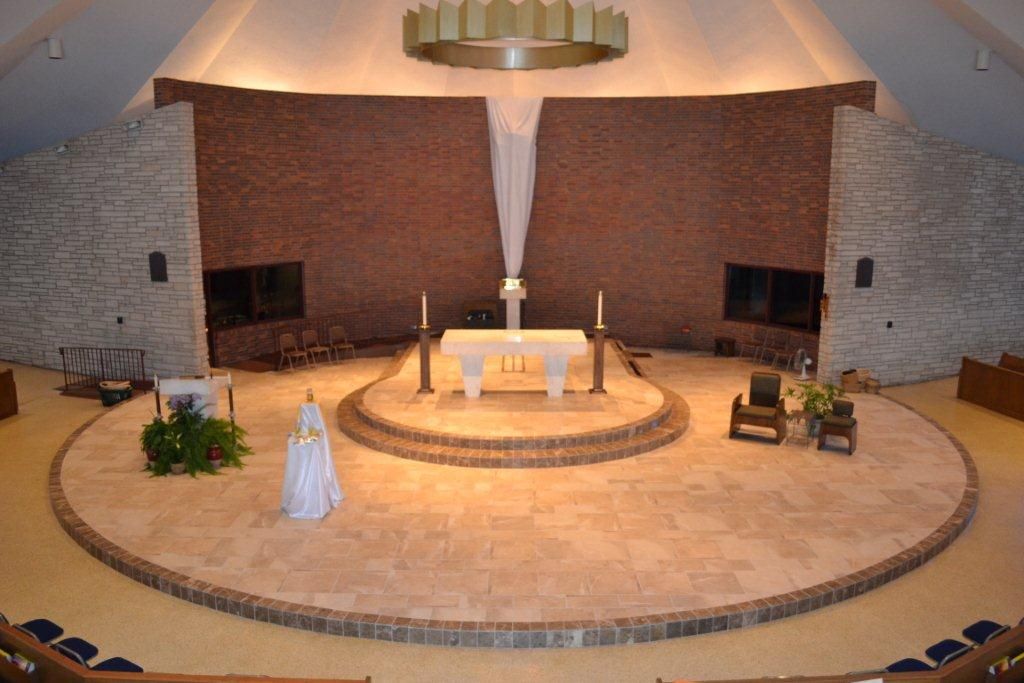

Memorial Brick
Early in 2009 we began the work of preparing the Memorial Walkway and landscaping the garden which joins the two main entrances of the church.
The initial engraving order for the brick pavers was submitted and the initial pavers were installed in July 2009.
If you would like to purchase a Memorial Brick, please complete a form (found under ' Our Parish' and 'Parish Forms' on this web site) and return it to the parish office. Forms can also be found near the Baptismal Font.
Baptistery and Baptismal Font
St. Joseph's baptismal area is shown here.
The font is made of the same marble as the altar, lectern, and tabernacle pillar. The font is at the center of a circular sunken basin which can be filled with water for adult baptisms at Easter.
The circular shape of the font and the basin are symbolic of a womb, indicating that the waters of Baptism are the waters of rebirth and of new life, and that it is through the sacrament of Baptism that a person becomes a child of God.
The font's original brass cover is no longer used. By leaving the font uncovered, St. Joseph Parish hopes to communicate that the sacraments are open to all.
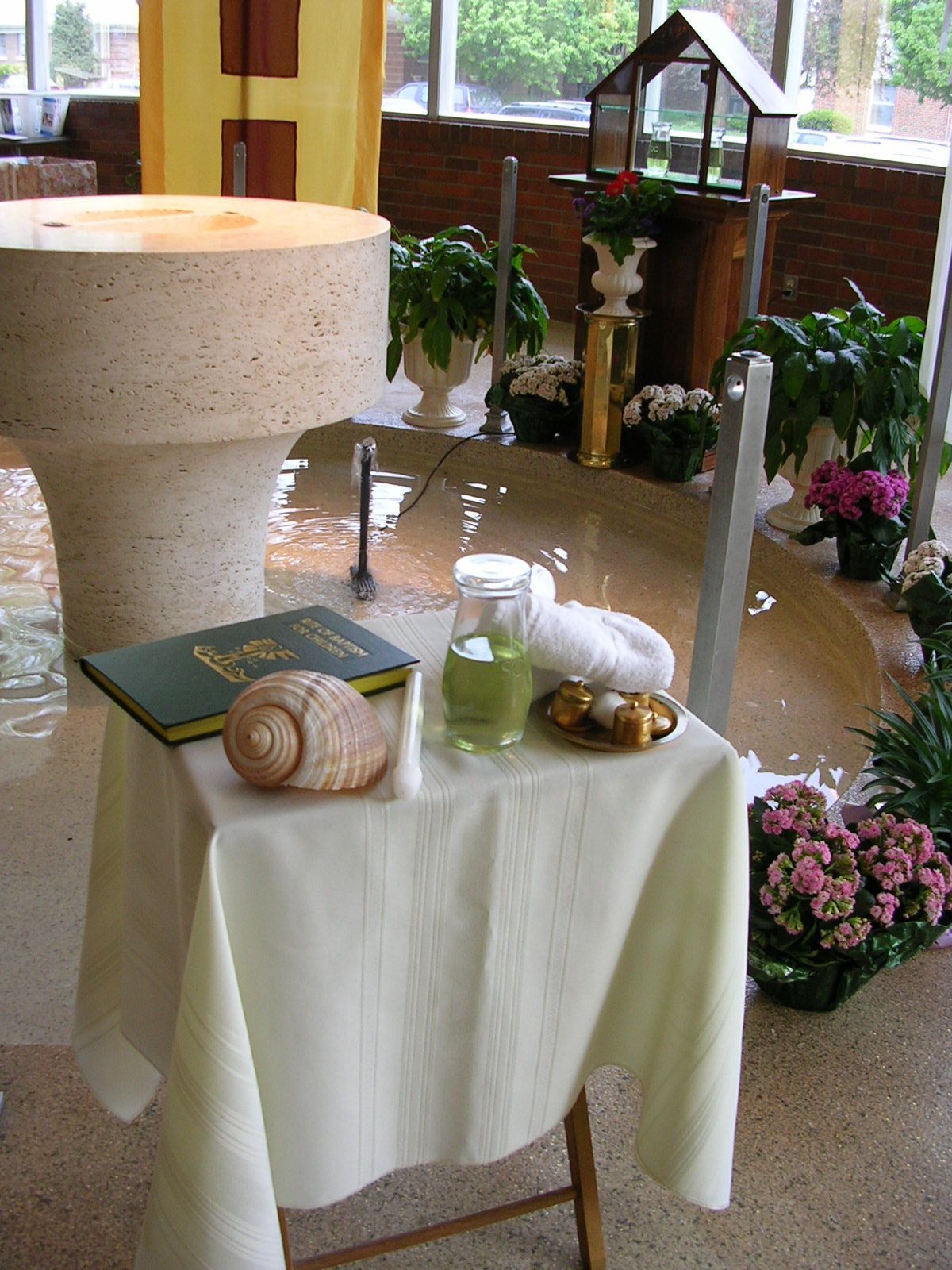
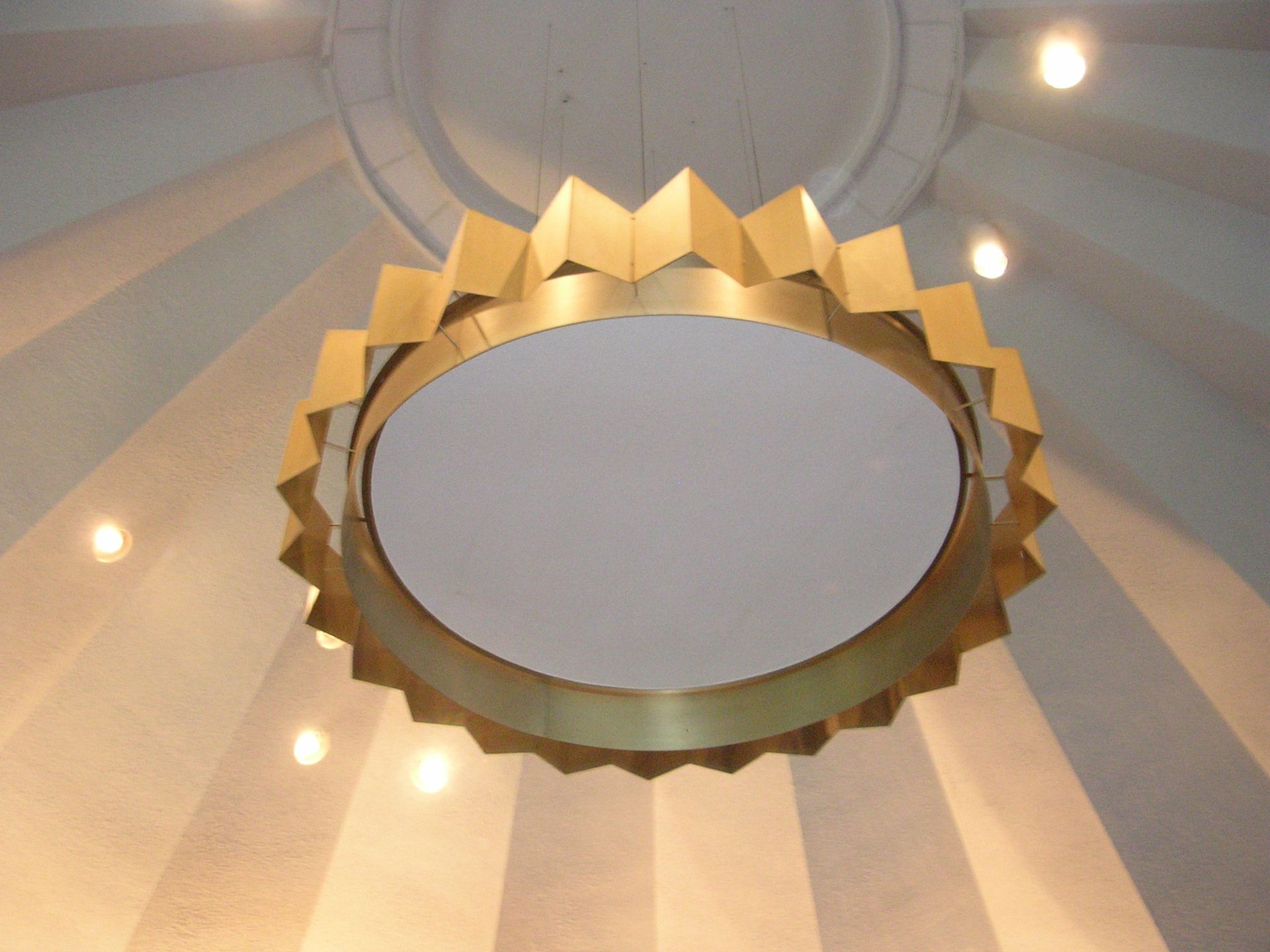
Baldichin
From the Italian word Baldacchino, referring to rich cloth from Baghdad used to cover sacred objects, a baldichin is an architectural canapy built over an altar.
The most famous of these structures is that which covers the high altar of St. Peter's Basilica at the Vatican.
The baldichin at St. Joseph is designed as a crown of gold. Suspended above the marble altar, it is a fitting crown over the table of God, commemorating Christ the King.
Stained Glass Windows
Stained glass windows, the work of Century Art Glass Co., St. Louis, were installed by the O'Brien Glass Co. of Springfield in 1971. At the time, the project cost $42,587.00. Each of the eight windows portrays the teaching of Jesus with Gospel Values selected by Fr. Gorman. They are meant to teach, inspire and permeate the hearts and minds of the parishioners.
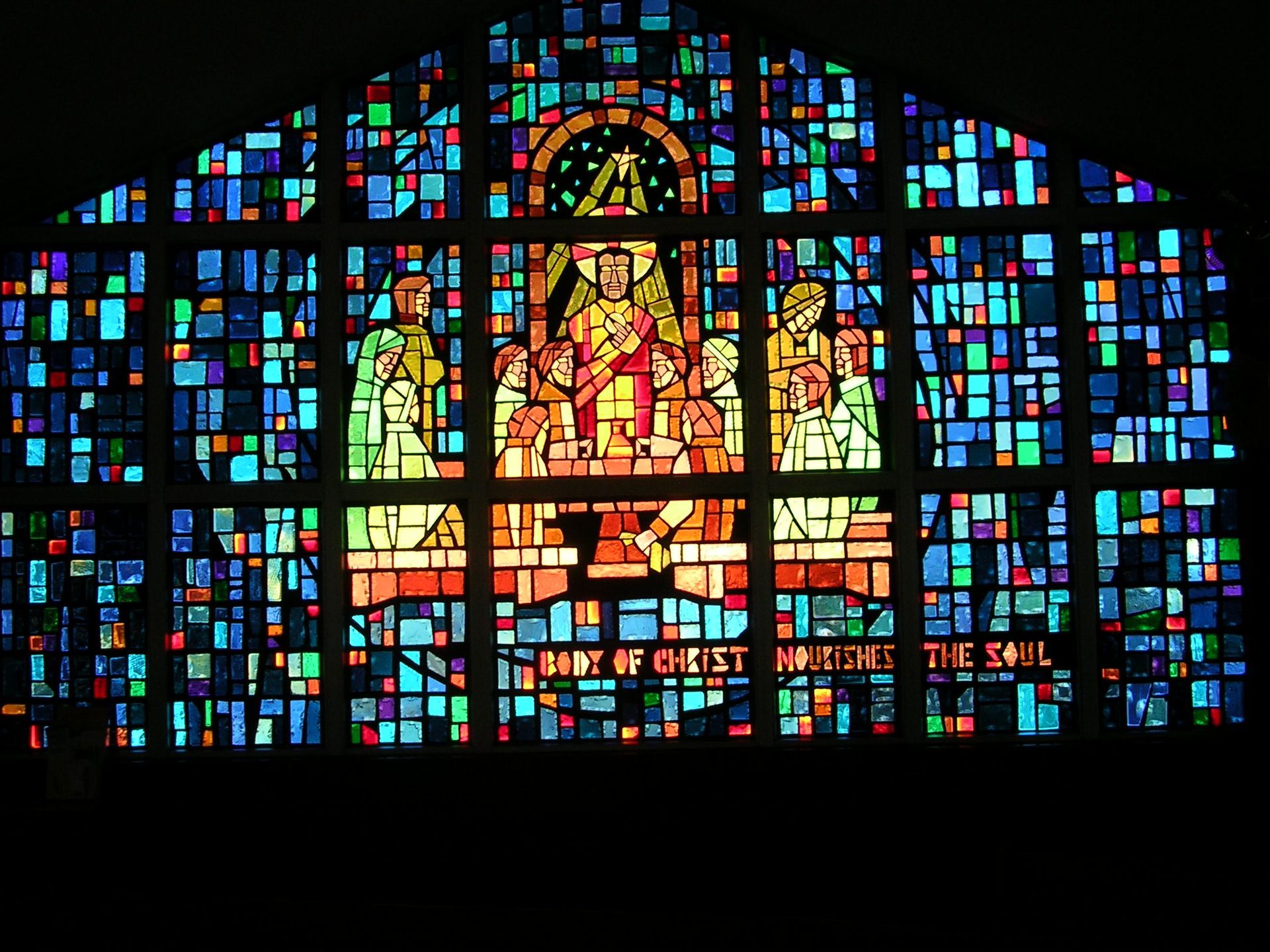
The Last Supper (1 Corinthians 11:23-25) 'Body of Christ nourishes the soul.'
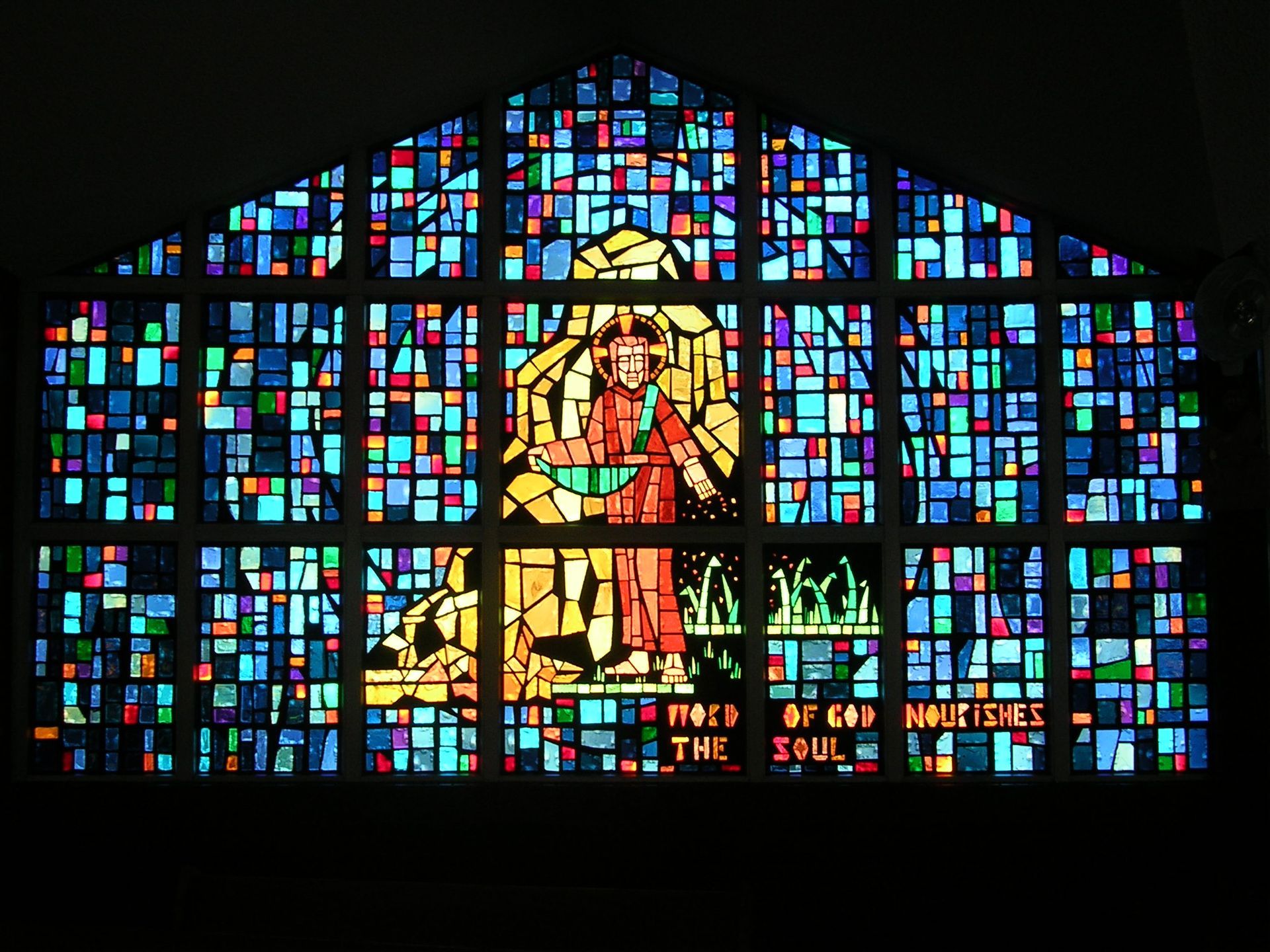
Parable of the Sower and the Seed (Matthew 13:1-23) 'Word of God nourishes the soul.'

Parable of the Lost Sheep (Luke 15:3-7) 'God loves all people, even the sinner.'
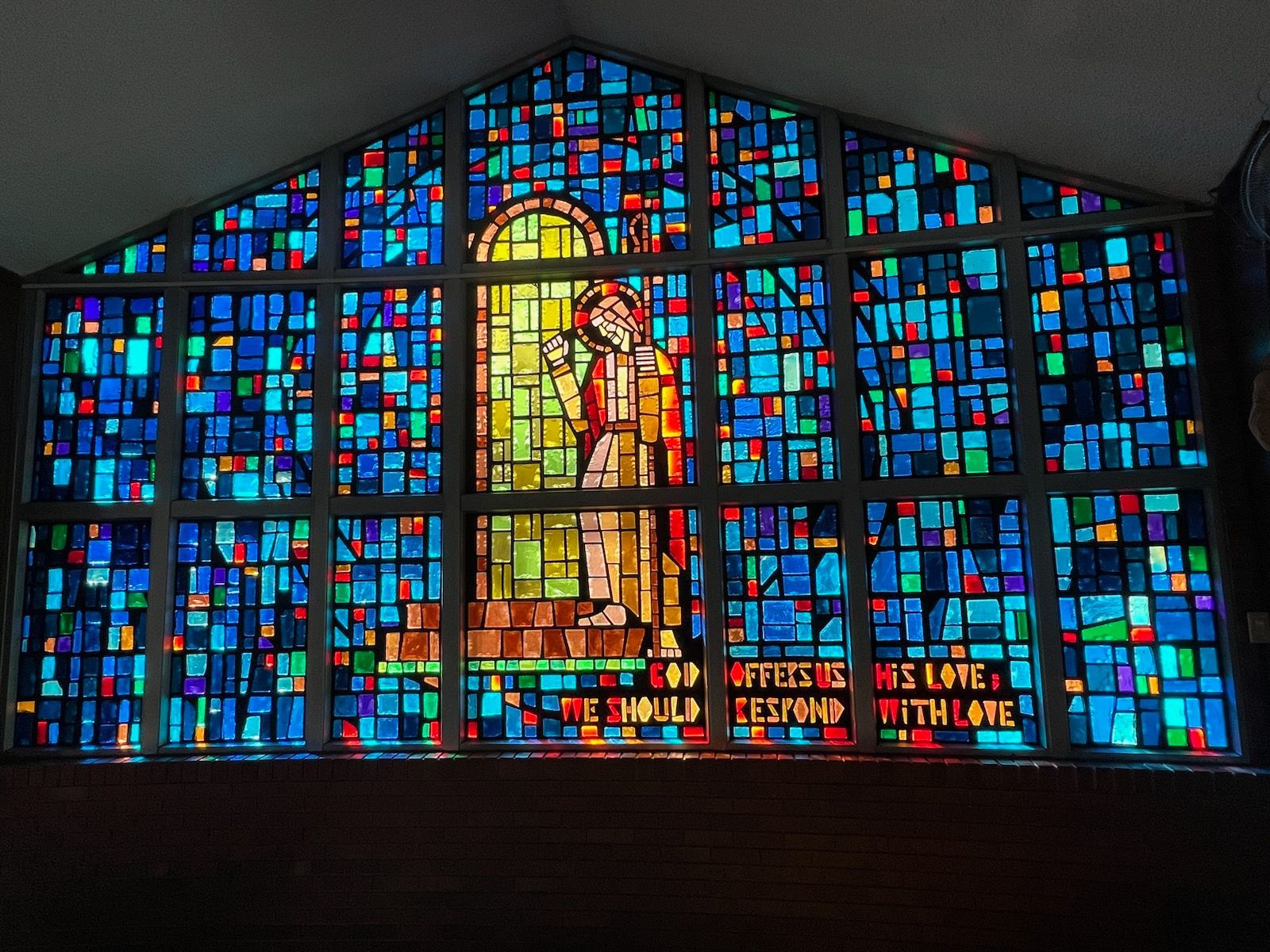
The Master knocks at the door (Revelation 3:20) 'God offers us his love, we should respond with love.'
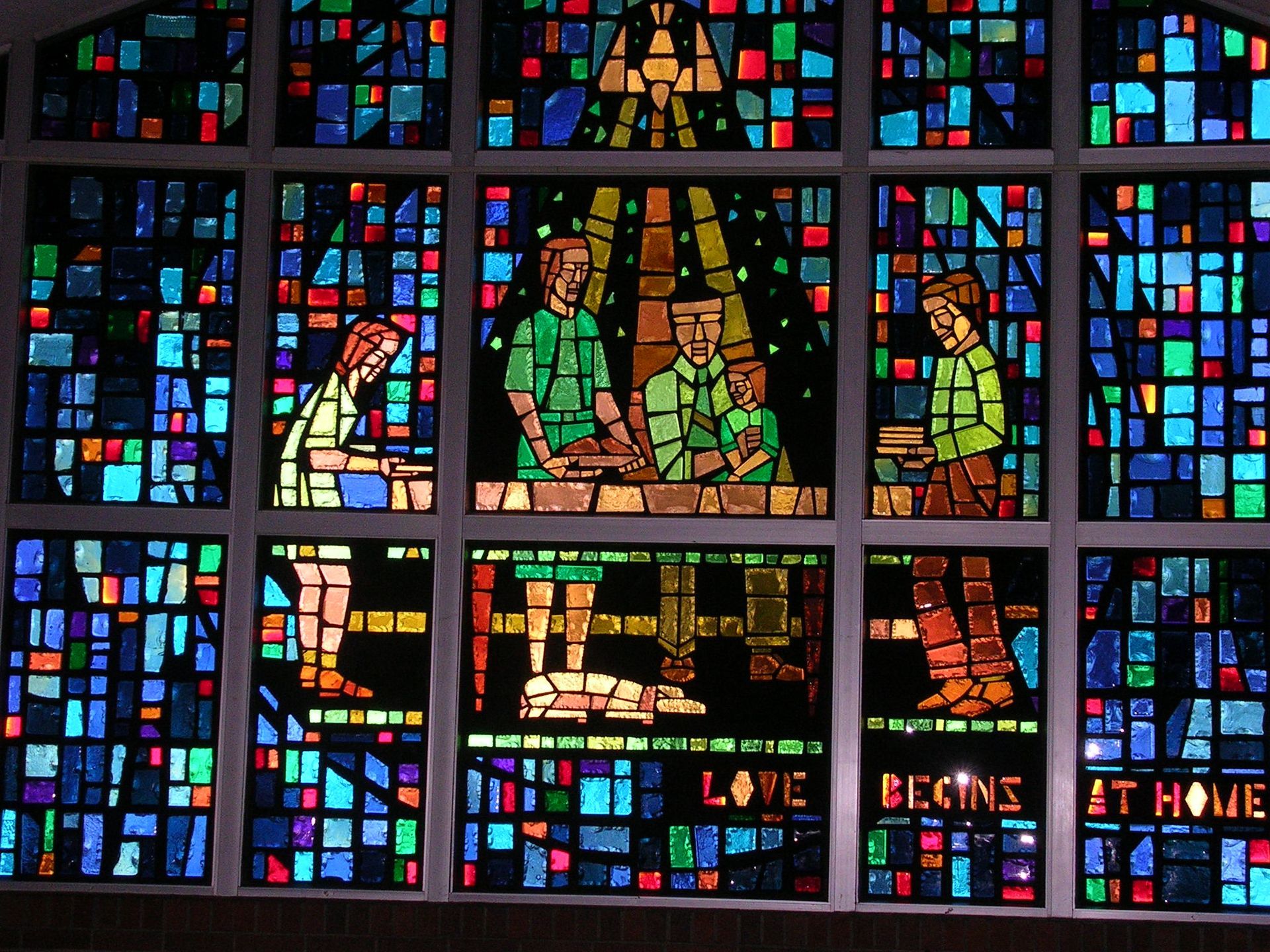
Family 'Love begins at home.'
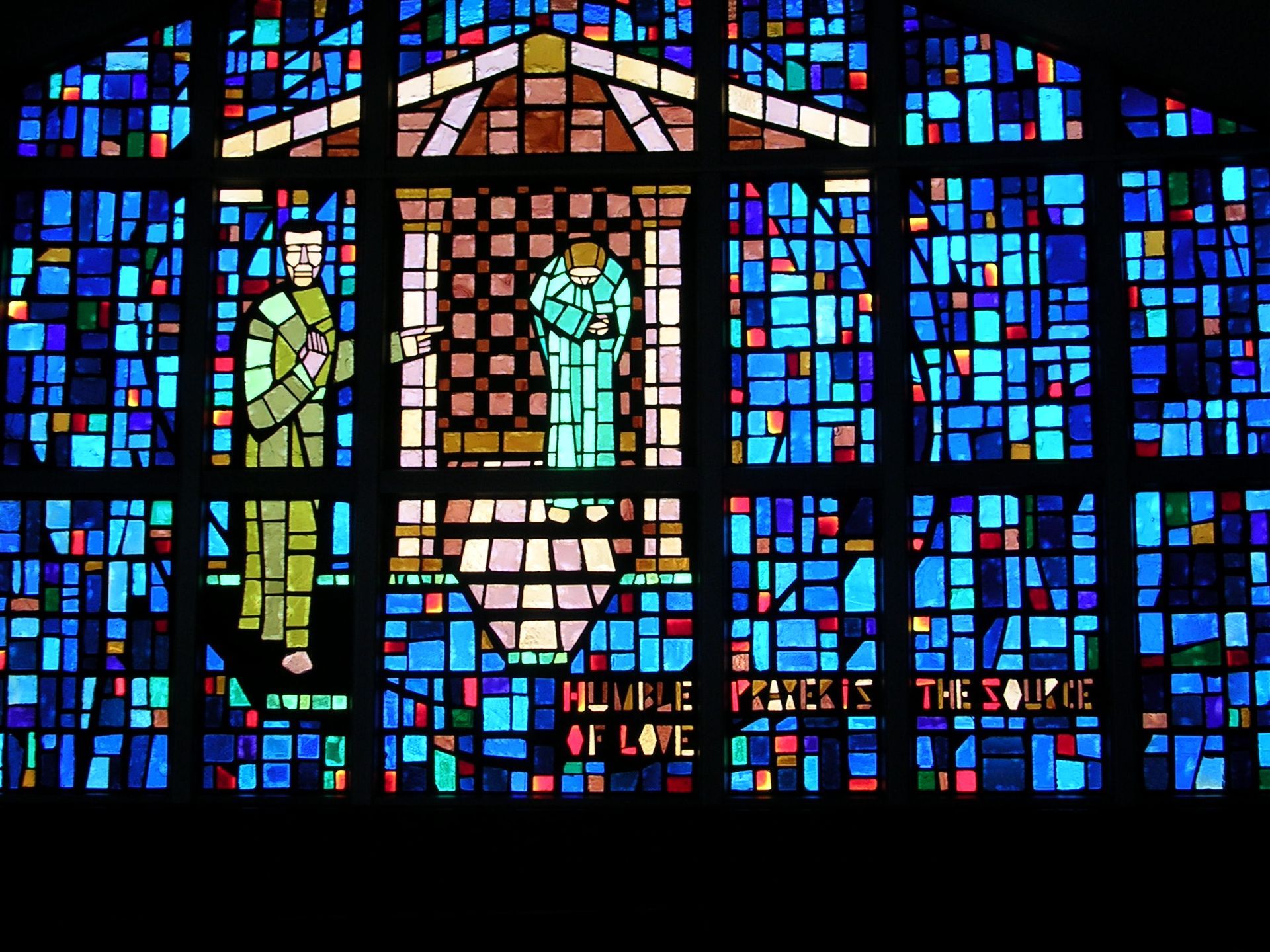
Parable of the Pharisee and Tax Collector (Luke 18: 9-14) 'Humble prayer is the source of love.'
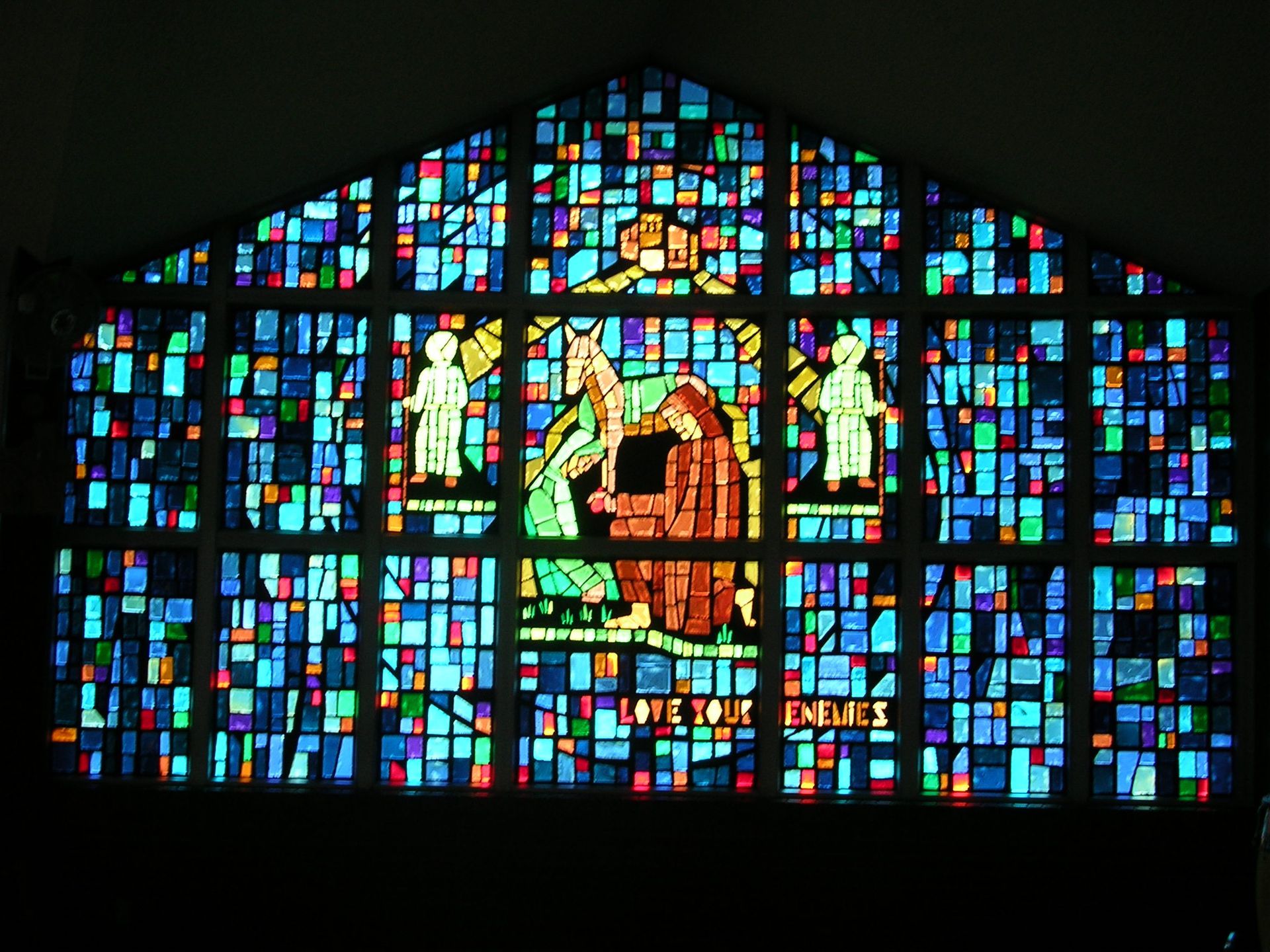
Parable of The Good Samaritan (Luke 10: 25-37) 'Love your enemies.'
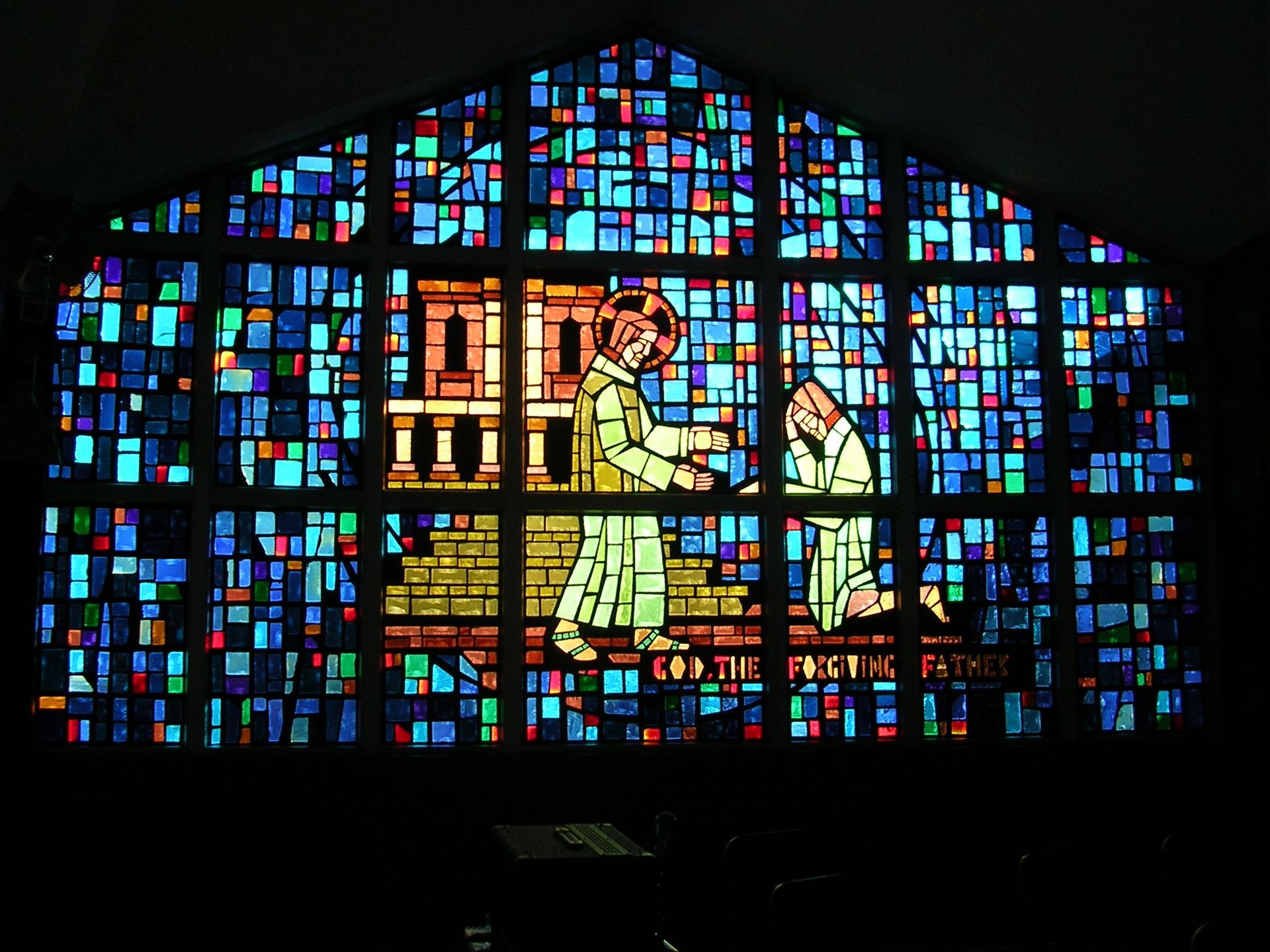
Parable of the Prodigal Son (Luke 15: 11-32) 'God, the forgiving father.'
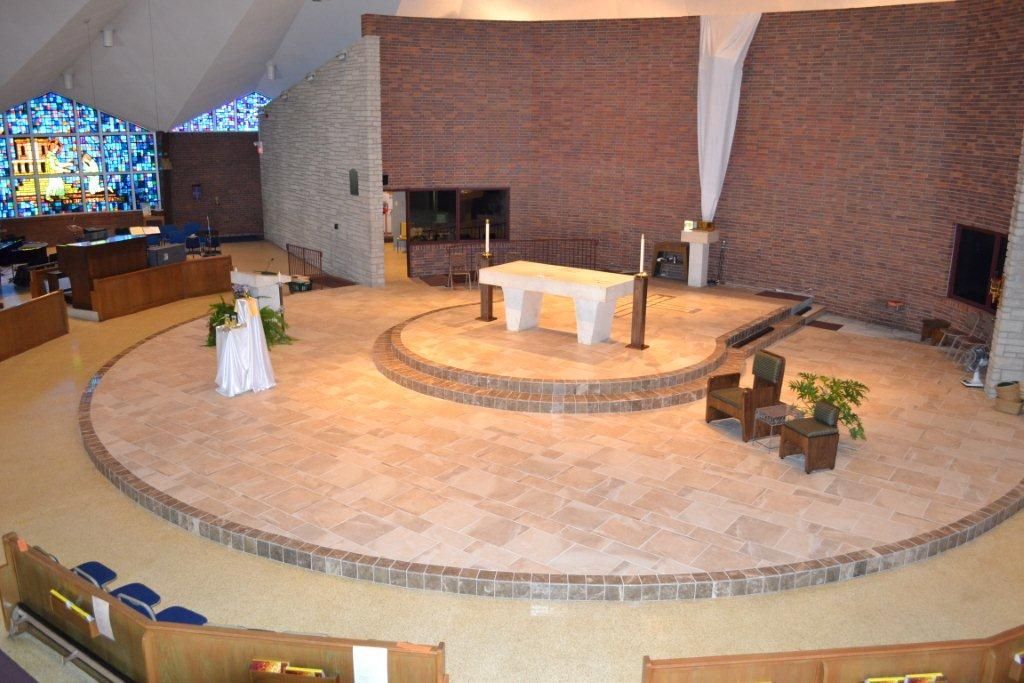
Tabernacle
The Blessed Sacrament is reserved in a sturdy, fixed, fabric-lined box called a tabernacle. The tabernacle at St. Joseph's is made of a gold-colored metal with double doors on the front and the back. The doors are red in color, and are decorated with a white cross. To the left of the cross is a beaten metal relief sculpture of a lamb, which is an symbolic representation of Christ. To the right of the cross are the Latin words, "ECCE AGNUS DEI," which translated means, "Behold the Lamb of God," words that the gospels report to have been spoken by John the Baptist to his disciples about Jesus.
Originally placed on top of the altar, the tabernacle was later moved to a free-standing marble pillar to the right of the altar. In the spring of 2011, the sanctuary was renovated with the carpet being replaced by tile, the tabernacle moved to the center back wall area, the ambo moved towards the front side and ramps put in for access.
Ambry
An ambry is the cabinet where holy oils are stored. We keep three oils there: the oil for anointing the sick, the oil for anointing catechumens and chrism for baptism, confirmation, priesthood and the consecration of altars. The bishop blesses these oils in large containers at the chrism Mass every year. Then they are poured into smaller vessels and brought to all the parishes of the diocese. The ambry should be replenished with fresh oil every year. The old oil may be burned.
The shape and size of ambries vary quite a bit. The church gives few specific instructions about its appearance. After the chrism Mass, the bishop is to instruct the presbyters in the sacristy about the "reverent use and safe custody of the holy oils." After a priest anoints the sick, he is instructed to return the extra oil to a place "where it is reverently kept." According to canon law, pastors should carefully keep all the oils "in a fitting manner." With those vague instructions the design for an ambry needs only be appropriate for its sacred contents and safe from vandalism, theft or some other harm. The ambry may be visible or concealed. Many churches have an ambry built into a wall of the sacristy. Accessible to priests but virtually invisible to people, the ambry was often located there, where it would not intrude on the Mass. However, since ambries were kept locked with a key that could easily be lost, many priests have simply kept the oils in a sacristy closet or safe.
More and more, Catholic parishes are building beautiful ambries and placing them where they can be seen. We have a great respect for the sacraments in which we use these holy oils. By keeping them in dignified vessels and displaying them in a handsome, well-lit case, the faithful can better regard their significance.
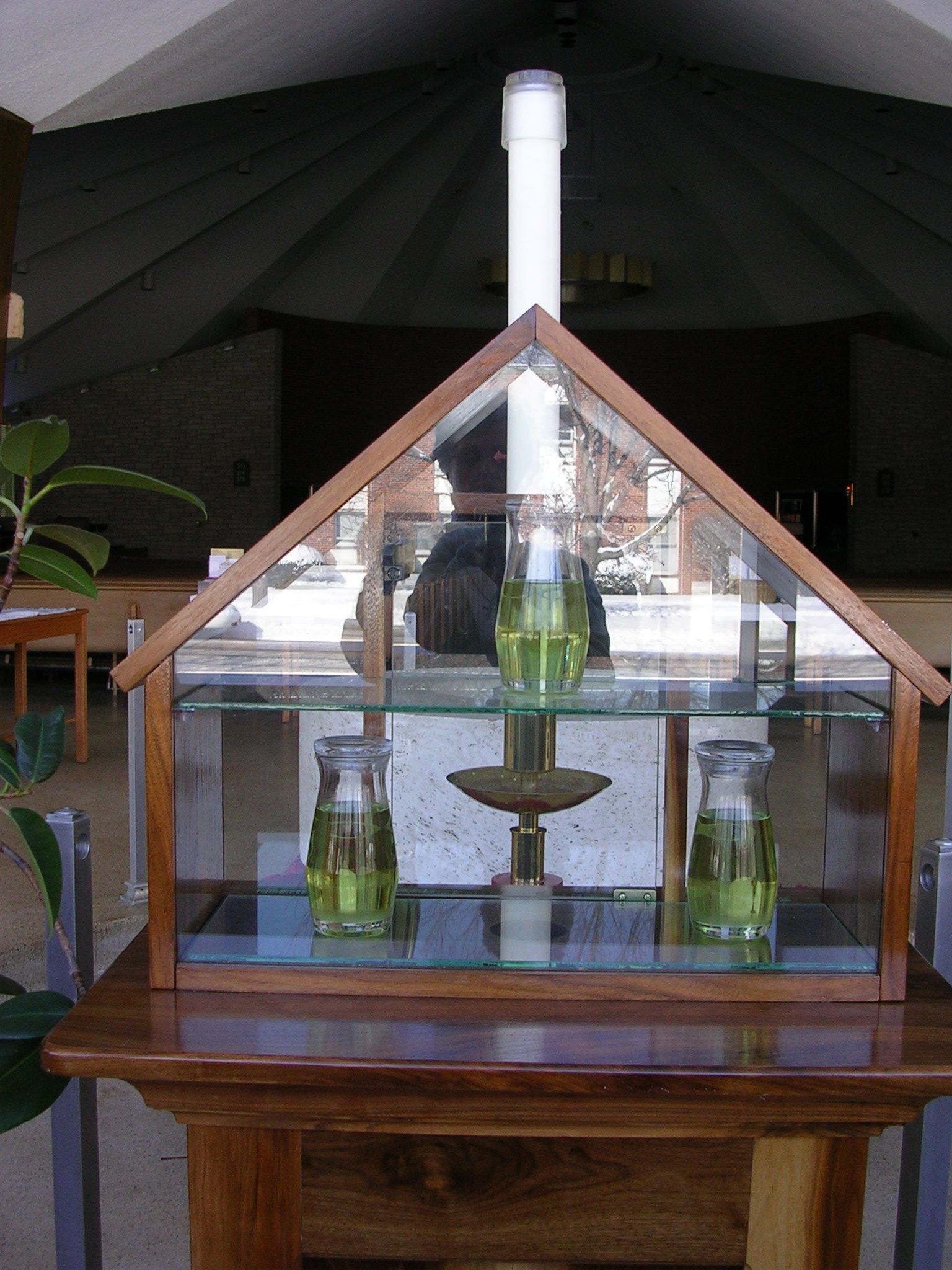
St. Joseph Church
Address: 1345 North Sixth Street, Springfield, Illinois 62702
Phone: 217-544-7426 • Email: parish@stjoseph.dio.org
Office Hours: Monday - Thursday: 9:00 a.m. - 4:00 p.m. •
Friday: 9:00 a.m. - 12:00 p.m.
WeConnect | By LPi


